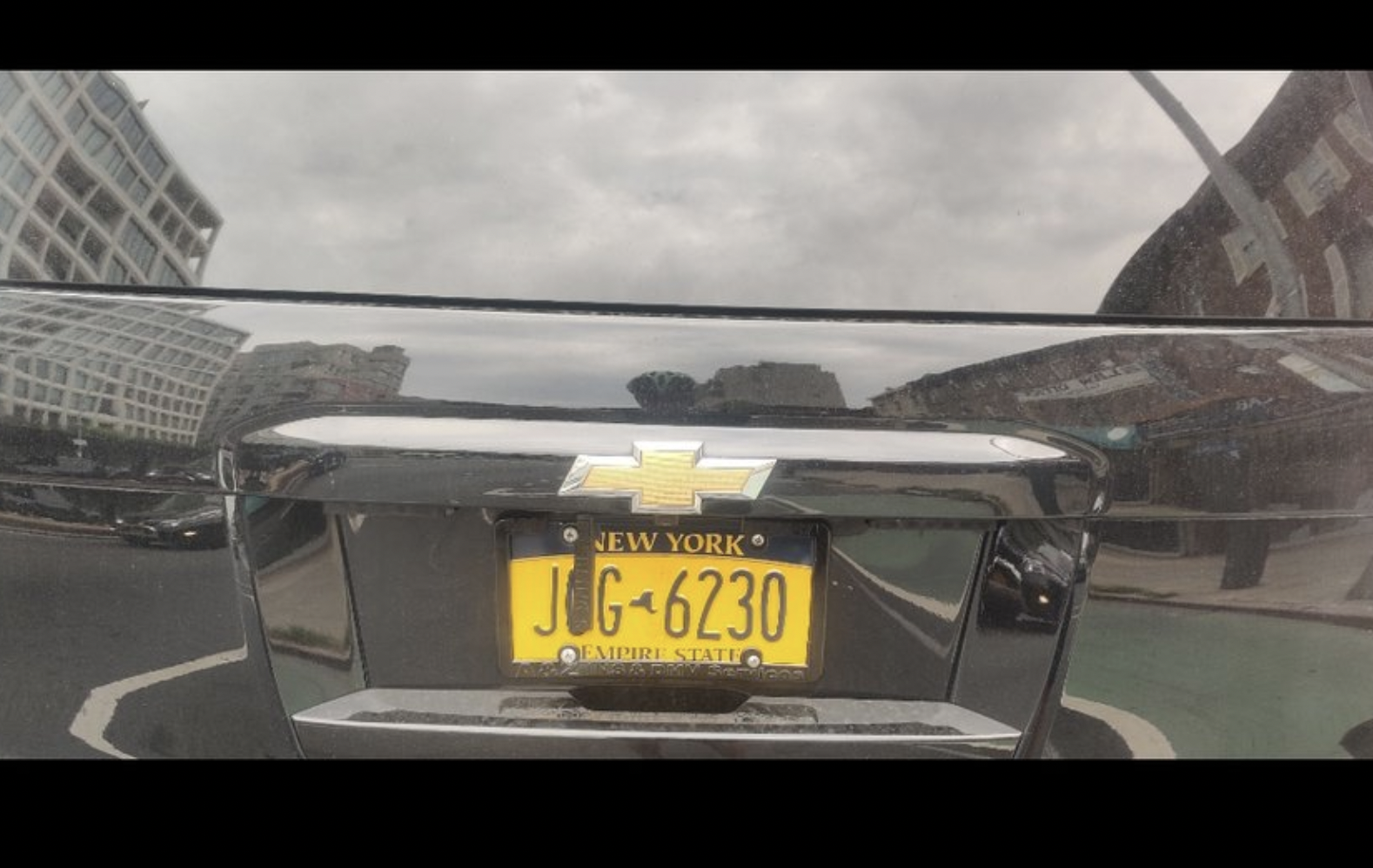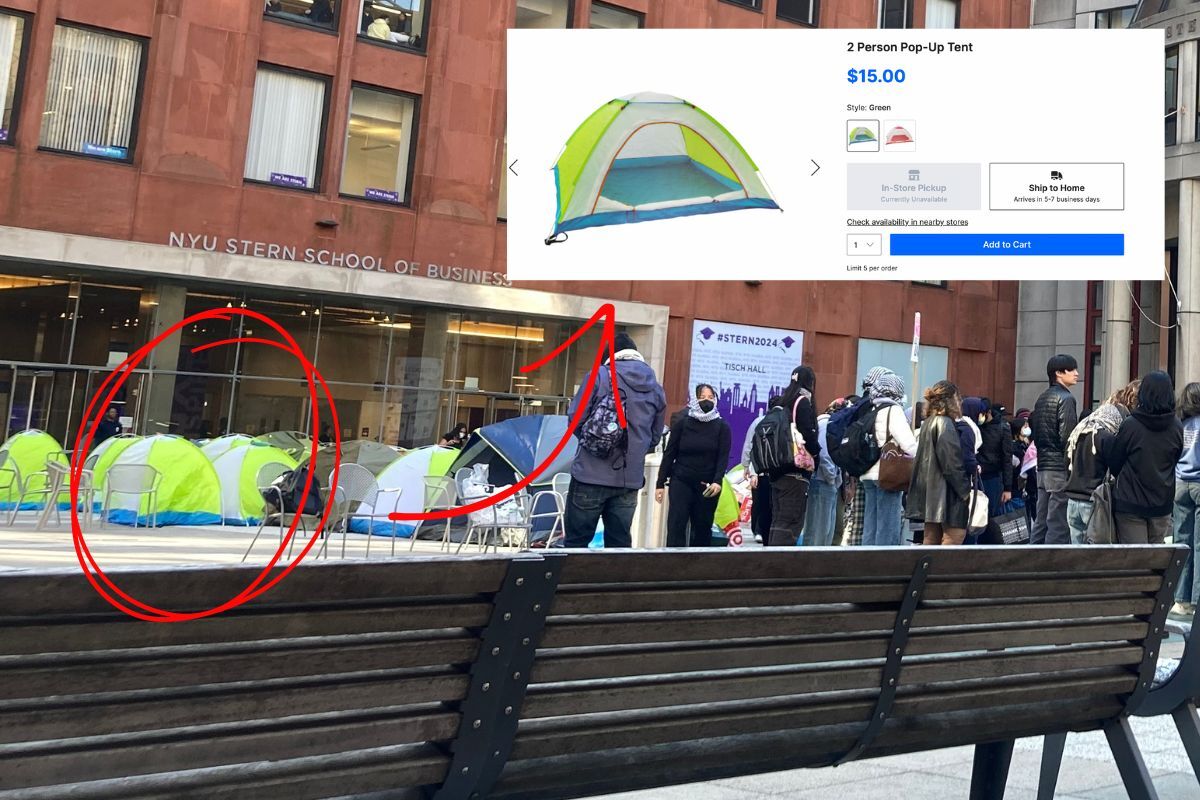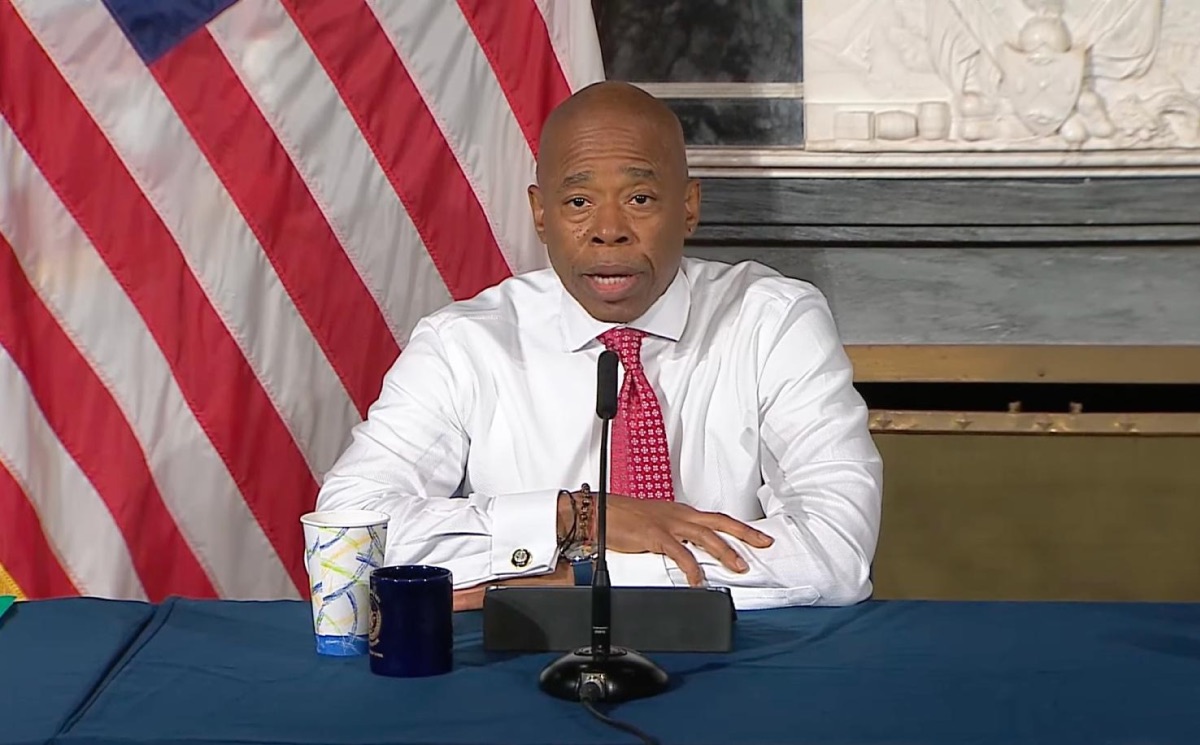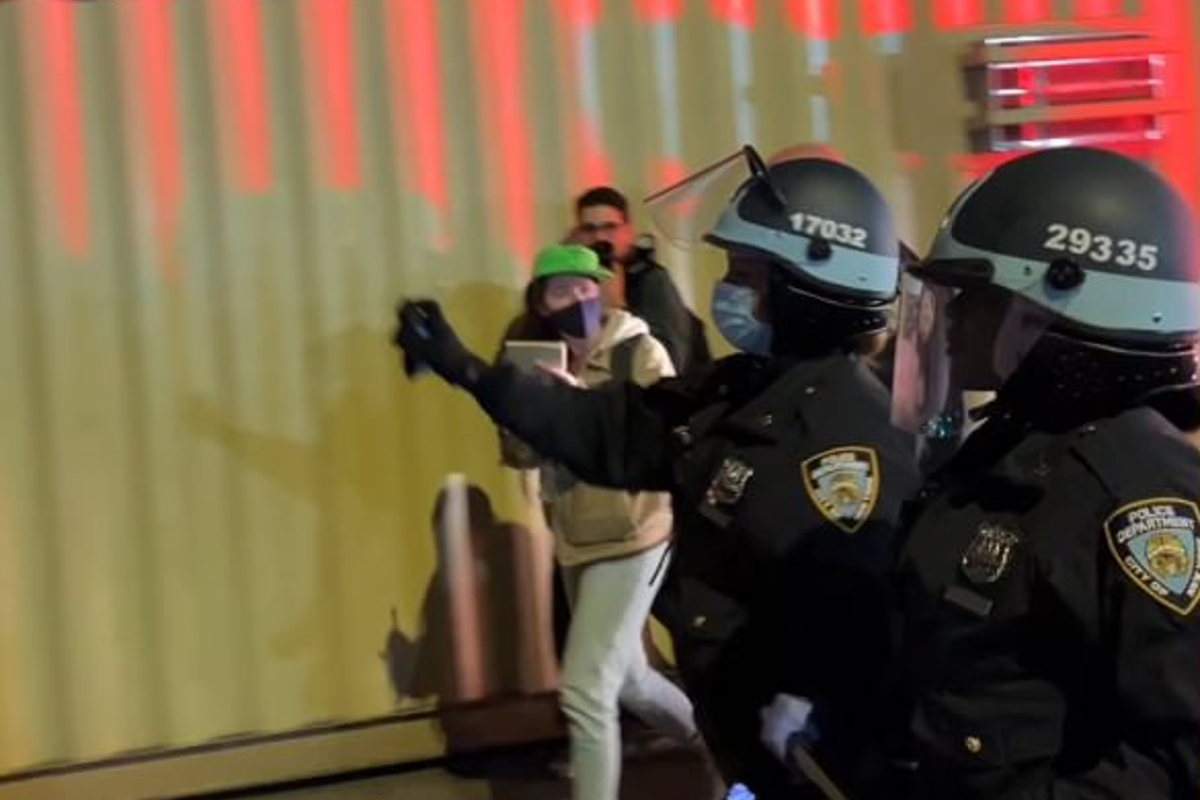Climate Change Is Threatening Some of NYC’s Oldest, Most Majestic Trees
Woodlawn Cemetery is a sanctuary for 6,000 trees, including the Japanese umbrella pine and a weeping beech. But for how much longer?
5:27 PM EDT on June 13, 2022
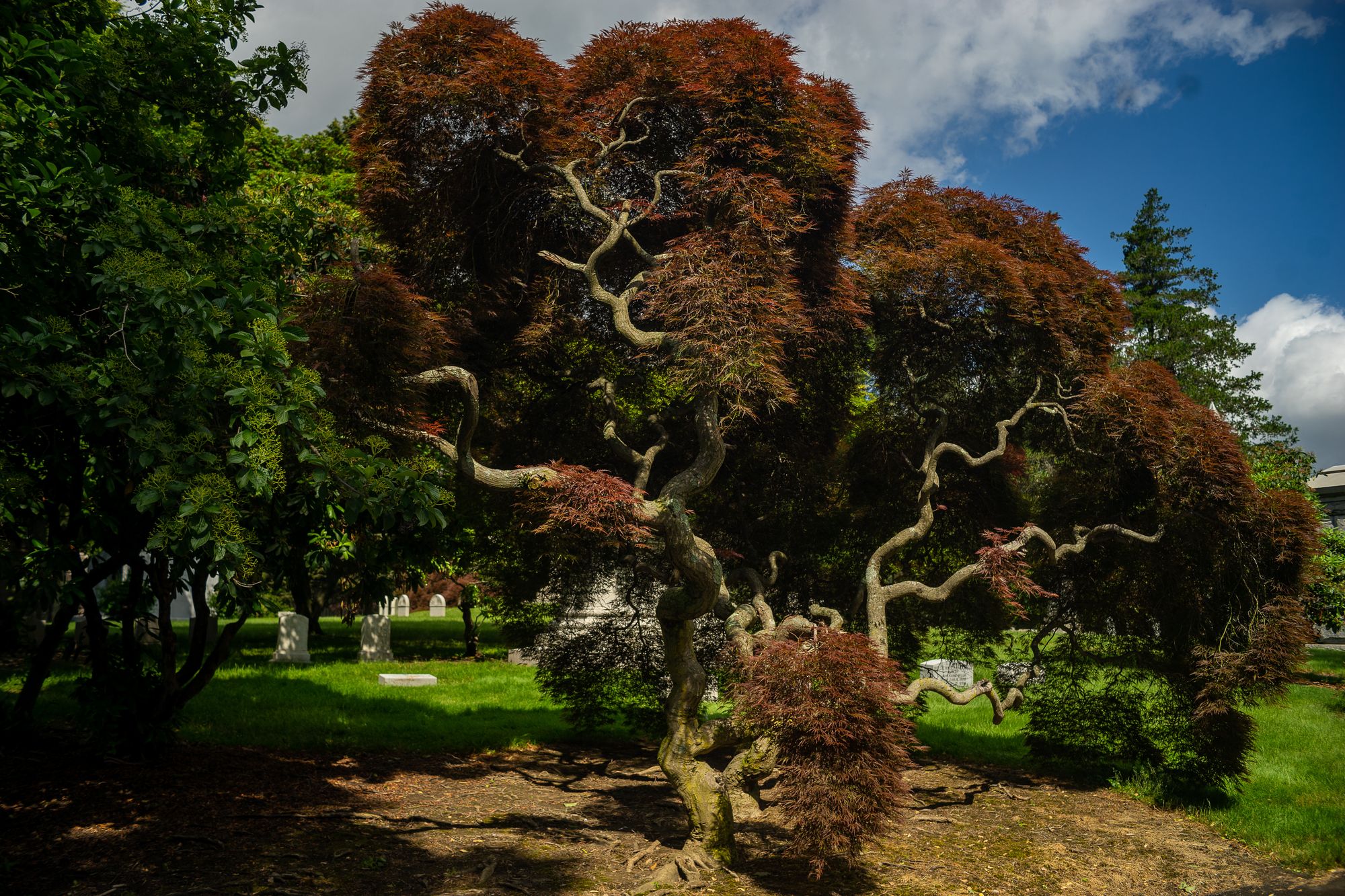
Japanese maples in Woodlawn Cemetery (Alan Chin / Hell Gate)
Woodlawn Cemetery is filled with lush and colorful life that flows around the dead. It's a diverse ecosystem at the end of the 4 line in the Bronx—a massive white oak towers over headstones, the branches of a weeping beech splay around mausoleums, and black squirrels bound on the graves of historical figures like "Moby Dick" author Herman Melville and jazz legend Miles Davis.
It might sound odd to consider urban cemeteries as lively, but they're just as much urban forests as our parks, and their vegetation provides important shelter for a variety of creatures. Sometimes their trees are older than the cemetery itself. Woodlawn, which was founded in 1863, is home to around 6,000 trees, five of which are part of an official list of the Great Trees of New York City, a collection of the city's largest, oldest, and rarest specimens that represent the best qualities of their species. Those five are an eastern white pine, Japanese umbrella pine, weeping beech, European cutleaf beech, and a white oak that may predate the American Revolution, according to one history of the cemetery. With five of the borough's 19, Woodlawn Cemetery is home to more great trees than any other green space in the Bronx.
It's easy to spot a great tree, even without looking at where it's situated on Woodlawn's tree map. Each one cools its surrounding area and soaks up excess carbon, as all trees do. But beyond their utilitarian uses, each has a distinct quality that makes it stand out among its peers.
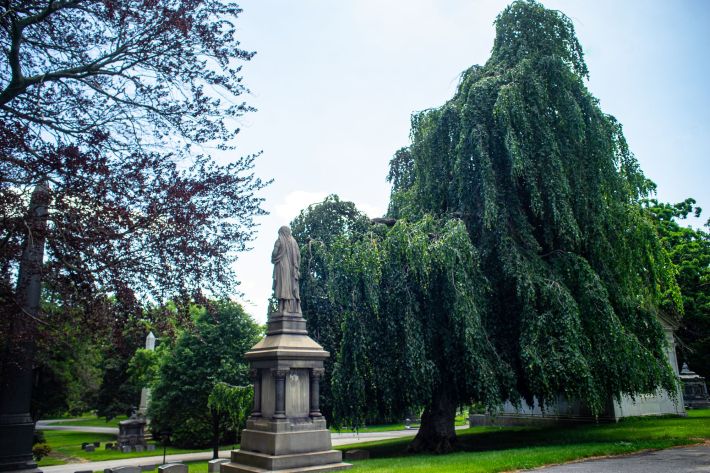
Walking through the southwestern gates and heading to the opposite side of the cemetery, the colossal white pine is the first visitors will come across. It stands tall in a grassy field with plenty of space to shed its forest-green needles, and its branches jut out stiffly compared to the swoop of the European cutleaf beech not far behind it. The Japanese umbrella pine quickly appears towards the center of the grounds. It's short but covered in pine needles so dense it's hard to see through to the reddish bark. Just past the cemetery's center, and tucked away near a mausoleum, is the weeping beech, with its knobby, melted look—nothing like the powerful, dense white oak at the northeastern border of the cemetery that displays its age through sheer size.
But climate change has come to Woodlawn, and the droughts, storms, and pests that come with it are endangering these majestic old trees.
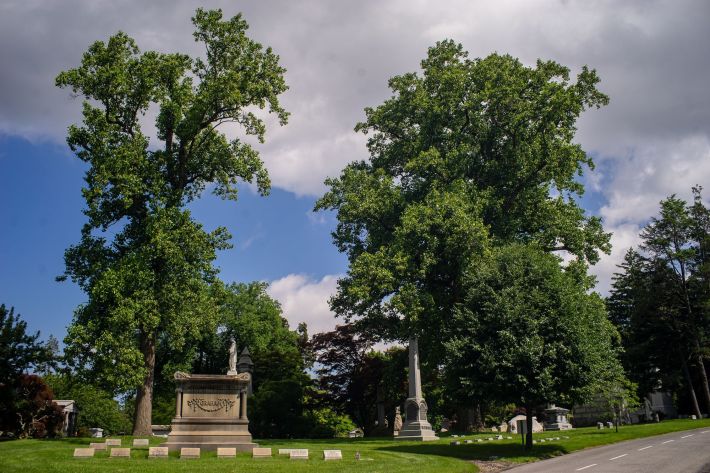
The 400-acre cemetery lost roughly 50 of its trees when Hurricane Isaias hit New York City in 2020, said Herb Landman, a contract arborist with Davey Commercial Landscaping who's worked at the cemetery for over four years. Heavy winds uprooted healthy, fully grown trees, throwing them into roads and blocking off parts of the grounds. Strong gusts ripped limbs off another 300 but left them salvageable.
Broken branches and smashed statues littered gravesites. Security had to turn away visitors, lest they saw their loved ones buried in cleanup zones.
Isaias spared the great trees, but not all hurricanes have. When Hurricane Sandy devastated New York City in 2012, it uprooted Woodlawn’s pendant silver linden—an imposing great tree known for its drooping canopy and fragrant flowers.
When it comes to preparing for severe storms, Landman said there's little else he can do besides saw off dead branches, or prune. Pruning reduces the chance that a tree will shed weaker limbs when wind speeds kick up. His only other option is to hope that everything stays in the ground.
"Sometimes a bad storm comes through and I'm thinking, 'Oh my God, what am I going to see when I get to the cemetery?'" he said.
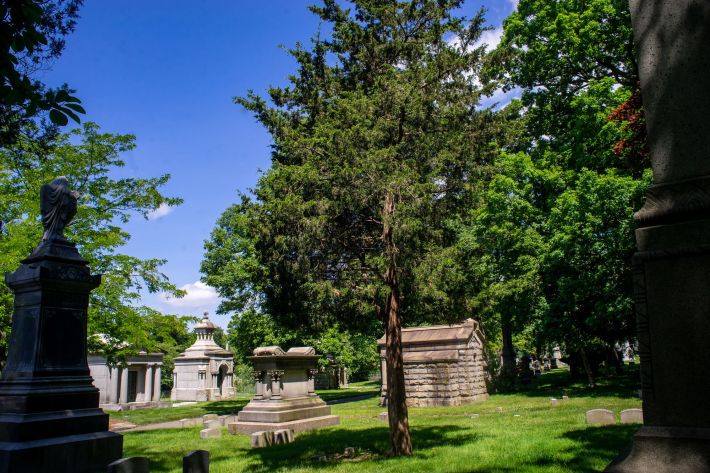
Decades back, Woodlawn lost even more trees to Dutch elm disease, a wilting disease caused by the invasive elm bark beetle. It killed hundreds of elms, including another of the great trees, and left only one survivor, according to Susan Olsen, director of historical services at Woodlawn. With fewer than 100 on the grounds today, elms remain an uncommon sight.
For some who live nearby, like 72-year-old Dora (she declined to give her last name), Woodlawn is a communal gathering space where she can spend time with those important to her, alive and dead.
"I come as often as I can, even if it's for a few minutes to say hello to my mother and father," she said. "I'm an only child and that's the only family I have."
Dora has made friends with fellow cemetery regulars, whom she calls the "Woodlawn weirdos." Her parents, godmother, in-laws, and many old friends and coworkers are all buried in Woodlawn. She's visited at least three times every week since her parents were buried in 2014. She always stops to say hello, but has also made a hobby of photographing seasonal flora. One of her favorite trees, she told me, is the eastern white pine that welcomes her to a familiar space.
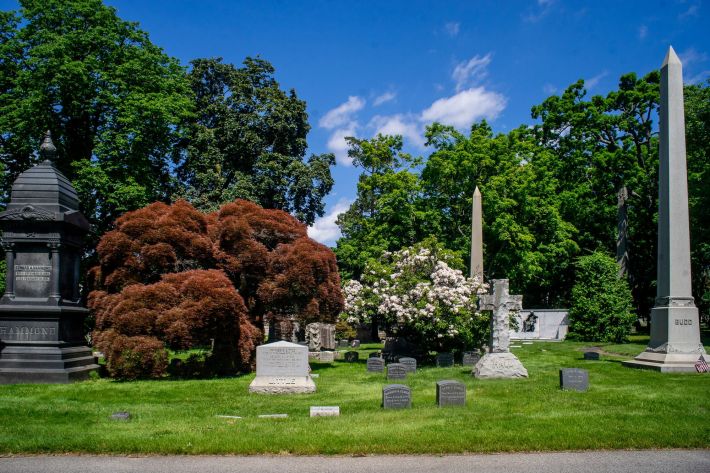
Laura Gigante, 60, has visited the cemetery after her job as a school office worker nearly every day for 10 years. She said she's formed relationships with employees and other regulars as she walks around with a friend. On the day we spoke, she excitedly shared that she took a photo of a dogwood tree, then explained that she'll walk around to take in the grounds—the flora, architecture, and hefty carp that swim in the cemetery's lake—for hours at a time.
"The ground, the flowers, the trees, it's beautiful,” she said. "And we get to know people here."
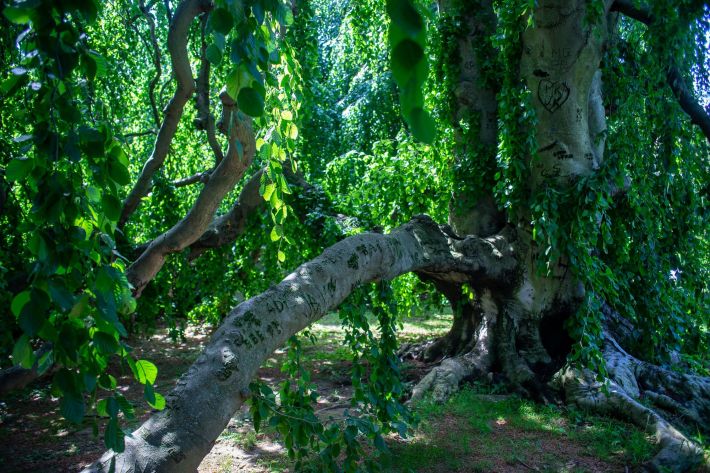
Woodlawn's employees feel a similar level of care for its wellbeing. Once every year, Landman drives around all 400 acres and takes a meticulous look at every tree on the grounds. To an untrained eye, it can all look like little more than varying shades of brown and gray wood. But Landman sees the finer details—deadwood, decay, and deer-antler scrapings.
When a tree seems to be dying faster than it should, his eyes scan for little holes in the bark no bigger than a dime. The culprit is often an invasive insect that's bored its way into the wood.
Landman has seen two invasive species feast on trees in the cemetery. One of the more common is the hemlock woolly adelgid. They bore into hemlocks as young crawlers and find a suitable spot on the tree's needles, lining them with thick clusters of white eggs that look like cotton, according to the New York State Department of Environmental Conservation. The adelgid usually kills its host within four years.
The other invasive insect spotted in the cemetery is the twolined chestnut borer, a long black beetle that drills into oaks like Woodlawn’s ancient white oak. They target trees under stress from drought or disturbed soil, which is common in cemeteries due to grave digging.
Landman said that he hasn't seen either insect attack any of the five current great trees, but his team takes extra precautions. Once a year, they apply a preventative insecticide treatment to the soil around the great white oak to protect it from the twolined chestnut borer.
But budget constraints at the privately owned cemetery, which is mostly funded through grants, coupled with an abundance of rainfall, made this year the first in many in which Landman elected to forgo the treatment. He's hopeful that borer activity will remain low in the cemetery.
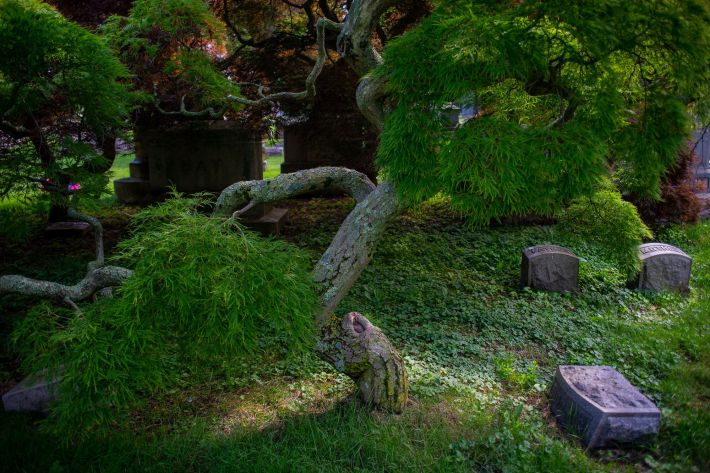
The effects of global heating are compounding. If some of Woodlawn's trees are dying from droughts, heat stress, or invasive insects, that reduces other trees' ability to survive hurricanes and other high-wind storms. Scientists predict hurricanes like Isaias and Sandy will occur more often in New York City.
"If a tree is growing up in a very windy environment, it will be more resilient to wind than a tree that is suddenly exposed to it," explained Andrew Reinmann, an ecologist at the City University of New York. "If you have a forest tree and you clear everything around it, you could increase the likelihood that tree is going to blow over."
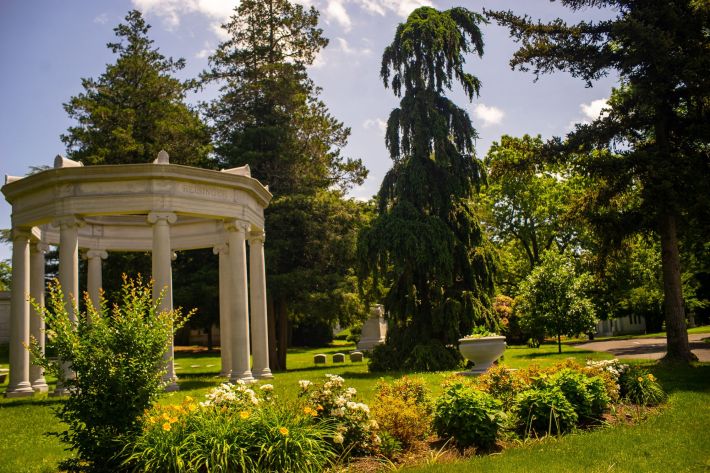
Reinmann also said that trees in northeastern urban areas display less heat resilience than rural trees in the same region. A study he's working on has shown that higher temperatures seen in cities can stunt the growth of trees—oaks in particular. Stunted trees capture less carbon and can't provide the same cooling effect to their surroundings that healthy trees can. If high temperatures stunt the growth of new trees in Woodlawn, which Landman plants every month, it could result in even higher temperatures.
High temps further the spread of invasive insects to colder regions. Three researchers from the University of Massachusetts conducted a 2007 study on warming temperatures and adelgid spread. According to the study, adelgids die during winter seasons with an average temperature of 23 degrees Fahrenheit or colder. But as average winter temperatures rise above that number, adelgids can survive the winter season and spread to new regions. Reinmann said adelgids have already decimated the hemlock population in New York City.

Despite the increasing frequency of events that threaten Woodlawn's trees, Landman remains hopeful for their survival. He said he chooses to focus on small positives—reduced twolined chestnut borer activity and the new trees he plants—amidst all the ways that climate change manifests in the cemetery.
"I work with living things and trees, and I just have to have faith that things are going to be okay," he said. "Because if I didn't, then I would be in a bad way."
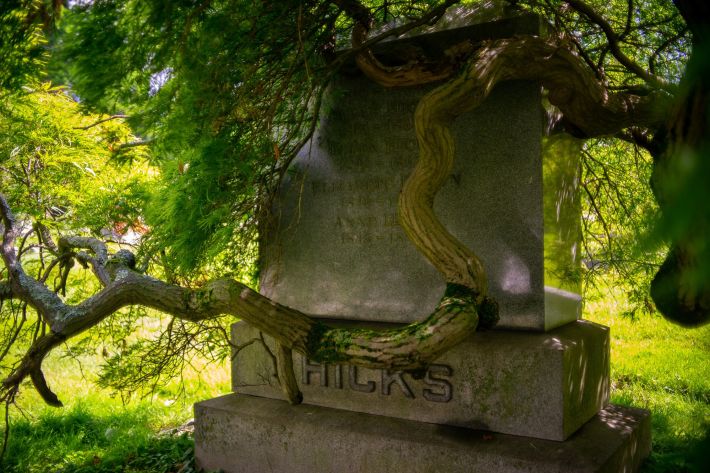
Thanks for reading!
Give us your email address to keep reading two more articles for free
See all subscription optionsStay in touch
Sign up for our free newsletter
More from Hell Gate
One Weird Trick for Getting Away With Obscuring Your License Plate
New York state lawmakers increased penalties for toll scofflaws, but also explicitly gave cops the power to cut them loose.
This Pandemic Program Gave $1,000/Month to Artists to Stay in New York. It Worked for Me
One way to support the arts in New York? Pay people’s rent.
Mayor Adams Suggests ‘Outside Agitators’ Created Tent Conspiracy to Ruin NYC
This goes all the way to the Big Top, and more news for your Wednesday morning.
Report: Mayor Adams Was Not, Strictly Speaking, ‘Ready’ For 8 Inches of Rain in September
And more links to clear out of your catch basin.
NYU Has NYPD Arrest and Pepper-Spray Protesters at Pro-Palestine Student Encampment
"The cops stormed in with their sticks and they started arresting people by the dozen, and they started to pepper-spray people left and right."
